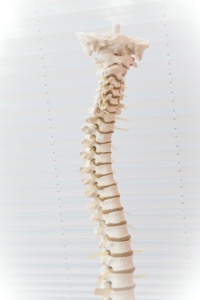
Spinal stenosis occurs when there is a narrowing of the spinal canal, which compresses the spinal cord and nerves. This medical condition often results in severe symptoms and a profound effect on those afflicted.
The condition can limit one’s ability to work or carry out normal daily activities and may result in permanent disability. Seeking disability benefits for spinal stenosis can be a lengthy, frustrating process.
Denial of Spinal Stenosis Disability Claims – Long Term Disability Insurance
When you file a claim for long term disability through your insurance company, be prepared for a fight. It is common for many insurance carriers to deny claims for spinal stenosis and other disorders of the neck and spine.
They will argue from many points of view, including lack of objective medical evidence such as x-ray, CT scans or MRI, to the fact that spinal stenosis is a normal aging process, or the pain or weakness does not meet the threshold of disability according to the language in the insurance policy.
Insurance companies may also selectively ignore any award of disability benefits made by Social Security for spinal stenosis.
What Is Spinal Stenosis Disability?
The condition is a narrowing of the spinal canal. This is usually due to spine and disc degeneration that occurs with aging. It can also be caused by injury, trauma, osteoporosis, or in rare cases, tumors.
The narrowing commonly occurs in the cervical spine (neck area) or the lumbar spine (lower back). Sometimes both areas are affected. The spinal cord and spinal nerves become compressed, or squeezed, causing inflammation of the nerves.
Cervical spinal stenosis results in pain, numbness and weakness in the arms, shoulders, and legs, and victims often suffer from balance issues and disturbance in their gait.
Lumbar spinal stenosis results in low back pain, as well as weakness, numbness, pain and abnormal sensations in the buttocks, thighs, legs, calves, and feet. Trouble walking, and loss of bowel or bladder control may also result. A very common impairment caused by this nerve compression is sciatica. This occurs when there is pressure on the sciatic nerve, which extends from the lower spine down the back of each leg.
Causes of Spinal Stenosis
Determining the cause of spinal stenosis can be complicated because, while spinal stenosis is the narrowing of the spinal canal, there is usually an underlying spine condition that is causing the spinal canal to narrow. For example, a bulging or herniated disc would cause the spinal canal to narrow in a particular place because the bulging disc has moved out of its normal zone in the spine. In this case, the patient would have spinal stenosis caused by a bulging disc.
However, there are several instances when spinal stenosis is caused by nothing more than the natural aging process. As we age, the ligaments in our spine can become thicker and compressed. Bone spurs may grow on the vertebrae of the spine. Discs in between vertebrae may deteriorate and misalign along the spine. All of these natural aging occurrences can cause the spinal canal to narrow and a nerve root or the spinal cord to be impacted.
Some of the most common spine conditions that cause spinal stenosis are as follows:
- Bone spurs
- Herniated disc
- Bulging disc
- Spondylolisthesis
If you have been diagnosed with any of these spine conditions, you might want to consult your physician about the possibility of your condition causing spinal stenosis.
Contact Us Today
If your claim for long term disability insurance benefits for spinal stenosis disability was denied, you need an experienced attorney to get you the benefits you deserve. Call Mehr Fairbanks Trial Lawyers without delay, for a free evaluation of your claim: 800-249-3731.
We represent disability insurance claimants all over the United States and deal routinely with the “big deniers” of group and individual LTD insurance.
 Kentucky ERISA Disability & Life Insurance Claim Lawyers
Kentucky ERISA Disability & Life Insurance Claim Lawyers

